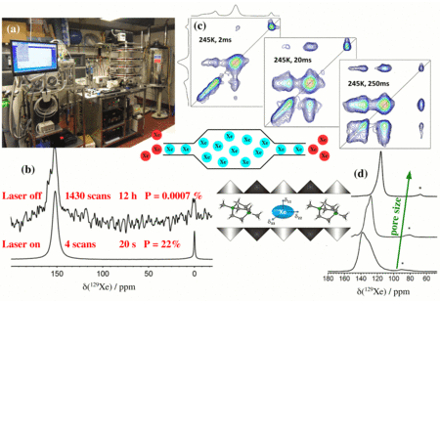Solid-state NMR techniques using hyperpolarized Xenon
Spin-exchange optical pumping (SEOP) is a process in which the angular momentum from an alkali valence electron is transferred to the nucleus of a noble gas atom. Such techniques can enhance the 129Xe polarization by three to five orders of magnitude, making it a unique tool to study surface conditions of particulate, mesoscopically structured materials. Nanoparticles with anisotropic properties are often surface dominated with long ranged hierarchical structure. As such, interfacial interactions and processes near the surface make the elucidation of such materials crucial for the development of functionalized materials.
Our primary aim is to utilize hyperpolarized (HP) 129Xe in conjunction with solid-state NMR methods to assist in the characterization of said materials. Transferring the high spin polarization HP 129Xe to other NMR active nuclei on the inner surfaces of porous materials will make it possible to investigate dynamic processes and structural compositions at the interface and assist in the identification of interface-specific interactions.
(a) Design of a high pressure polarizer
(b) Enhancement of the polarization
(c) Static 2D EXSY spectra using hyperpolarized 129Xe NMR
(d) 1D 129Xe-MAS NMR of pillared clays

